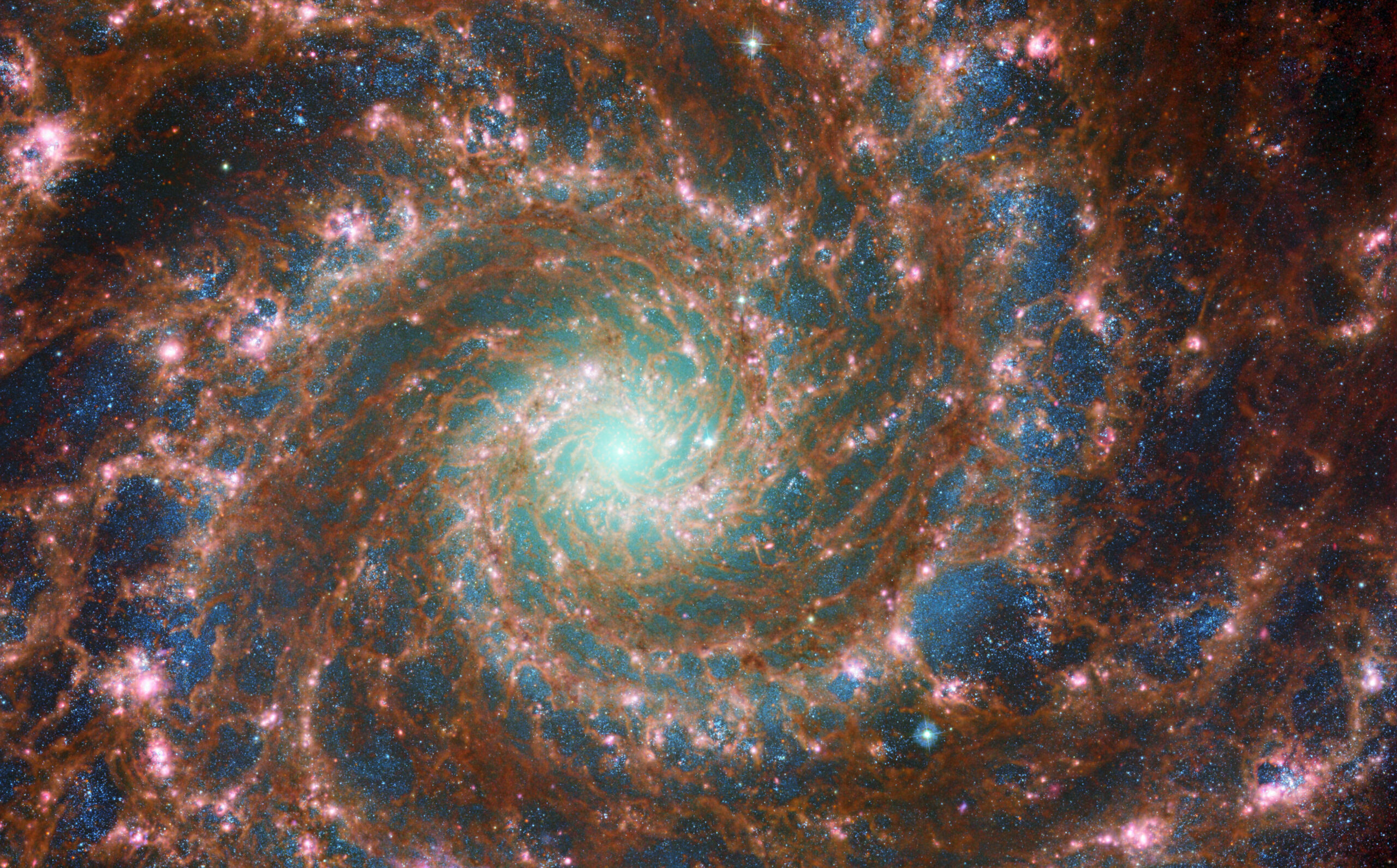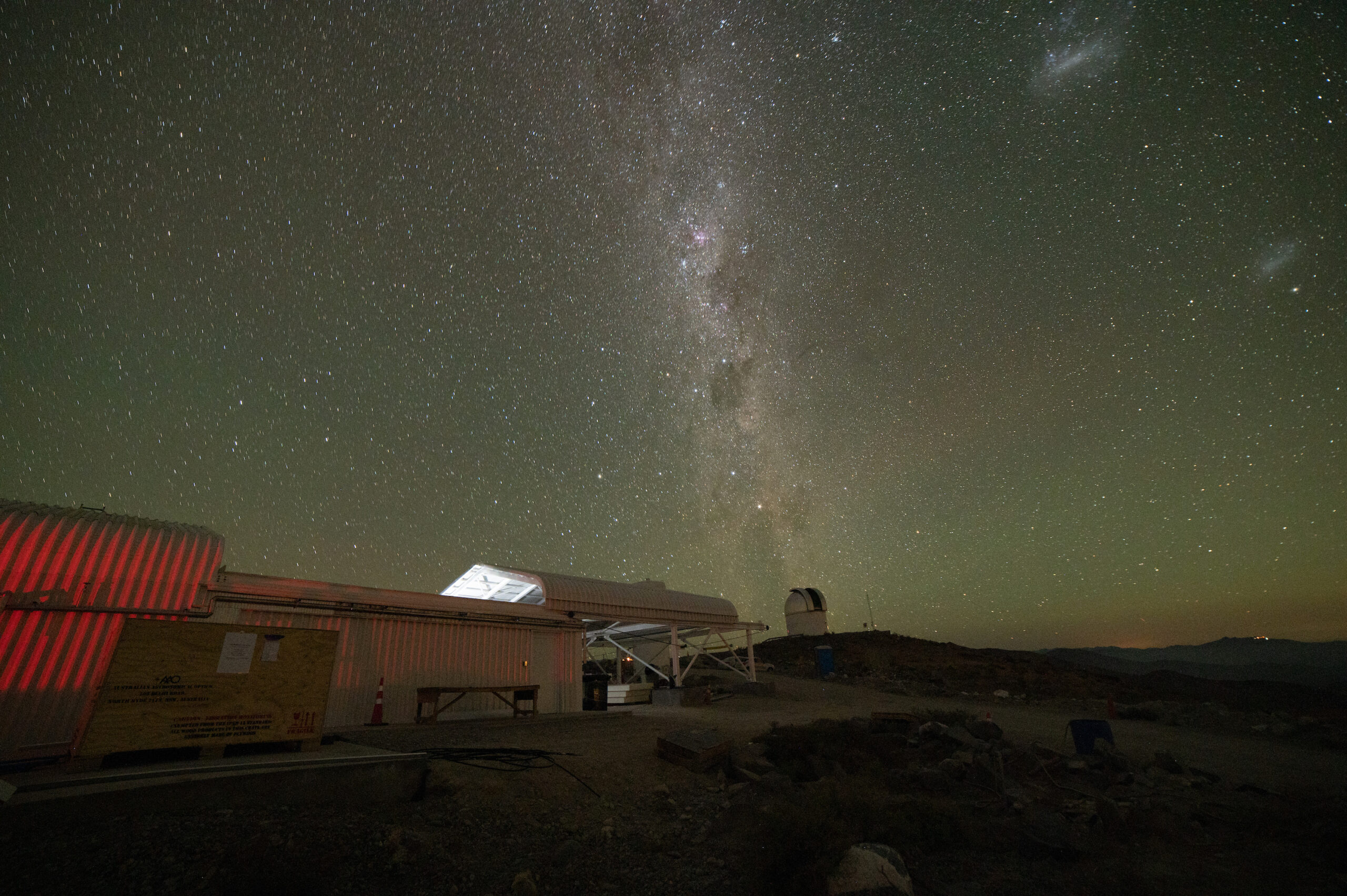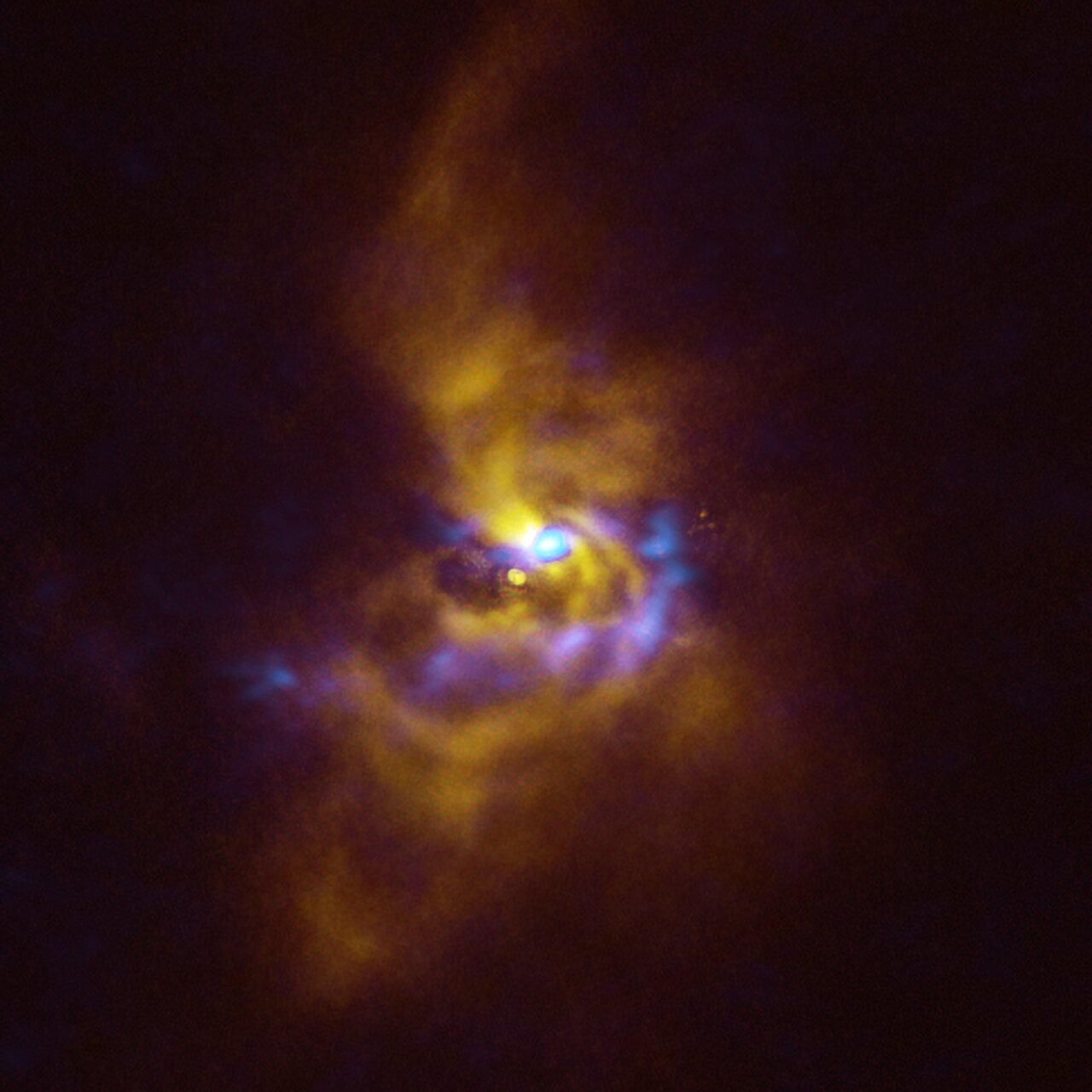
Turbulent Hot DOGs
Super-massive black holes (SMBHs), that is black holes with at least one million times the mass of the Sun, are typically found at the center of galaxies. While black holes are, by definition, the darkest regions of the Universe as light cannot escape their gravity, they can paradoxically also be the most luminous. When SMBHs grow, the gas that is feeding them forms an accretion disk before crossing the event horizon that can become so bright as to outshine all the stars in a galaxy together. These luminous growing SMBHs are called “quasars”, and can be found across the Universe in a range of luminosities.
Extremely luminous, hot, dust-obscured galaxies (EL Hot DOGs) are some of the most luminous quasars discovered to date. These objects, which shine with the intensity of more than 100 trillion Suns, lived at a time when the Universe was less than one seventh of its current age. A group of astronomers led by Tanio Díaz-Santos, currently a researcher of
the Institute of Astrophysics at FORTH in Greece and until recently a postdoctoral researcher at the Núcleo de Astronomía of Universidad Diego Portales, used the Atacama Large Sub/millimeter Array (ALMA) to image a
small sample of 7 EL Hot DOGs in the far-infrared spectrum of light in order to study the distribution of gas and dust near the SMBHs as well as in their host galaxies. These observations have allowed them to acquire critical information about the gas dynamics and the physical properties of their interstellar medium.
In a recent study, the investigators have discovered that the random motions of the ionized gas in EL Hot DOGs are consistently very large, which indicates the interstellar medium is very turbulent — something that can be likely explained by the infall of companion satellite galaxies and the energetic feedback from their central SMBHs. However, the morphology and rotation of the gas is not uniform among the EL Hot DOG population, as it usually is in obscured quasars found in the local Universe. This lack of uniformity in the gas and dust properties have led the investigators to think that the EL Hot DOG phase may be recurrent in the life of the most massive galaxies living at the knots of the cosmic web in the early Universe. This would be in contrast with the current paradigm of the formation of quasars in the nearby Universe, where this phase is believed to happen only once, as a consequence of the merging of two massive spiral galaxies. While these results are tantalizing, more observations are needed to confirm the difference in the origin and evolution between near and far obscured quasars.
You can read more about this study in the recent piece published by astrobites at this link. The article, which also includes Manuel Aravena, Robert Assef and Jorge
González-López from the Núcleo de Astronomía at UDP among its authors, will be published next month in the Astronomy & Astrophysics Journal. You can find the arXiv preprint here (https://arxiv.org/abs/2104.09495).









